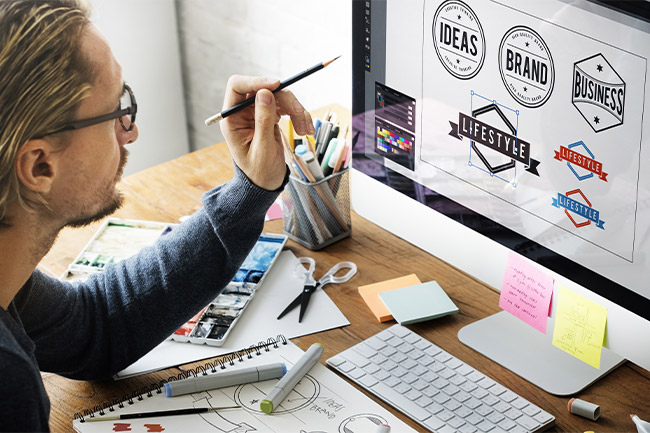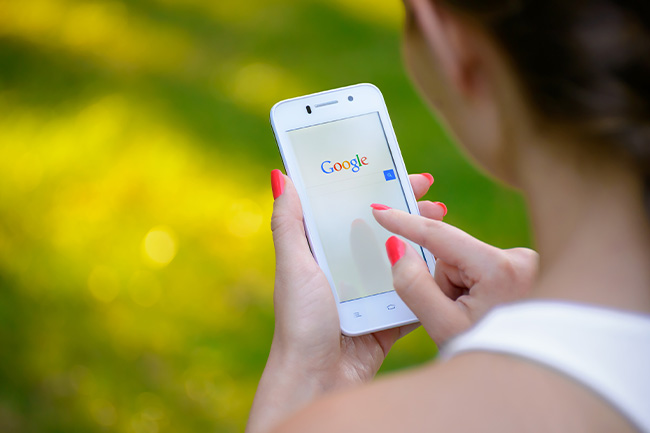
Deciding on where to start when designing a logo for your business is no small feat. Whether you already have an idea in mind of the style of logo you want or don’t even have a name for your business yet, the options and decisions can seem endless. Many people don’t realize how much goes into designing a logo and chances are, if you choose the lowest-cost option, you’ll regret it. Investing in your brand early and taking the time to establish brand guidelines can be key to longer-term success.
Let’s explore the key steps to successful logo design at every phase of the process.
Research Phase
Identify Your Brand Archetype
Do not skimp on the research phase. It’s imperative to understand you/your client’s brand and vision. You have to spend time on this phase in order to initially establish or fully understand the brand identity. After initial meetings and discussions regarding goals, products or services, target audience, and design aesthetic preferences, it’s time to identify the brand archetype.
The brand archetype is the brand’s personality framework. There are 12 brand archetypes that are derived from Carl Jung’s personality archetypes. Often a brand or business is a mix of more than one brand archetype. It is very common to have a secondary brand archetype to support the brand voice. Aligning with brand archetypes helps define your brand voice for the company and how customers should relate to the brand. For example, a brand that identifies as 75% Ruler and 25% Lover is a strong case for a high-end aesthetics brand that wants to exude power, best of class and elite status, but still evoke a sense of belonging, welcoming and loyalty to clients seeking their services.
The 12 brand archetypes are broken down into four main sections to start. Those are as followed: explore spirituality, leave a legacy, pursue a connection, and provide structure. From there, they all hold three brand archetypes, each with their basic human desire, and are usually divided by a color wheel as well.
Explore Spirituality (green colors) holds the archetypes Innocent/Safety, Sage/Understanding, and Explorer/Freedom
Leave Legacy (yellow/orange colors) holds the archetypes Outlaw/liberation, Magician/Power, and Hero/Mastery
Pursue Connection (red/violet colors) holds the archetypes Lover/Intimacy, Enjoyment/Jester, Everyman/Belonging
Provide Structure (blue colors) holds the archetypes Caregiver/Service, Ruler/Control, and Creator/Innovation
Competitive Research
After the brand’s personality has been clearly defined, the next step in the process is to search for great examples of what has already been done well. Find examples that support the archetype and put together a mood board to present to the client to make sure we are on the right path. Steer clear of widely known examples like the Apple logo, Nike Swoosh, Coca-Cola wordmark, and other household logos; you want to dive deep and uncover new design ideas, color palettes, and inspiration.
Competitive research helps the client see real examples of effective logos and allows them to give better direction on what type of logo they like and what they do not like. This is the perfect time in the design process to point out everything from color, typography, and other smaller design elements to get the client thinking, brainstorming and providing constructive feedback.
Concepting Phase
In this phase, you’ll apply what’s been learned so far about the brand and how best to find a connection. Some of the best and most recognized logos have a clever meaning or hidden message within the brand logo itself. A great example of this is the FedEx logo: if you have never noticed the letter E and X make up the shape of an arrow pointing to the right. This is just a subtle way of them to say “we move things” using the negative space in their logo itself. Being able to show hidden messaging like this will help support what you are designing and allow you to connect to the target audience even better.
It is important to note that not every logo has something like this and trying to force something to make sense can end up backfiring while even confusing the final solution. With the right amount of creativity and time spent on this step, organic ideas can arise.
Planning Phase
Sketches/Roughs
It’s time to put ideas on paper in this phase! Sometimes what one is envisioning can look drastically different in composition when put on paper. It is best practice to put your 20+ ideas on paper very small and then take the best overall three and work in details a little larger. This eliminates ideas that don’t quite cut it and separates ones that have real potential. The main focus in this phase is the wordmark itself and deciding what the icon that represents the brand is going to be. Some logos do not have icons at all but in most cases they do and in this phase, it’s time to find that direction.
After you have conceived as many ideas as you can, you will have some clear favorites or winners that stick out on the page. The sketch stage is then to redraw these at a larger scale of six inches or so with as much detail as possible. You should decide on a typeface, with additions of any fine lines, small corners, dots, etc. The goal is then to take this drawing and upload it to your computer to start your next step.
Execution Phase
Computer Compositions
After narrowing to the best execution, it’s time to start building out a black-and-white version of the logo. Most of the details should have been worked out in the sketches/roughs step so the composition overall should be close. The typeface and icon at this point have been decided and it’s time to bring the logo to life in vector form.
A very important part of this step is to test the logo in small sizes. Most likely it’s being designed on a full 8.5 x 11-inch artboard in Adobe Illustrator but best practice is to scale down to a small version, all the way to even an inch or less, to see if all the details still hold up. It’s imperative to consider all logo uses such as business cards and email signatures as well as mediums of print, web, etc.
Final Refinements
Once stakeholders weigh in, their feedback will decide if any major changes to color and typography need to be made.
The versatility of the logo will be tested here as well. The logo may look great in black and white but how does it look in full color or all white on a dark background? Color testing of the brand mark and typography in this stage leads to the final product.
Final Packaging
In addition to the working file or .ai file, you are going to want to save out all versions for print and web uses of the logo. The main three formats that are most important to deliver to the client are EPS, PNG, and JPEG. Many other formats can be used like TIFF or SVG and those can be included in order to ensure all potential file types for various applications are delivered.
If presenting this to a client, a final presentation is a nice touch showing the evolution of the logo and real-world use cases of it on signage, merchandise, etc. We like to include elements such should a nice cover page with the logo in full color, a page for the conceptual breakdown and explanations for the design decisions that were made. We also like to show the versatility of the logo with dark and light versions as well as full color. Next, is the logo usage showing a horizontal version, stacked vertical version, brandmark icon only, and a small version of the main usage. Color options, the palette that was chosen and why are always great to showcase, as well as some alternate explorations of the logo. Lastly, as mentioned, showing mock-ups of the logo out in the world on business cards or T-shirts can bring the brand to life for the client and build on the excitement.
Now that you have a much better understanding of what a well-designed logo process looks like, you should now have an expectation or standard going forward. Whether you are looking to hire someone to design a logo for you, or you are a designer yourself, ensuring these key phases are executed can help ensure a thoughtful and memorable logo.


